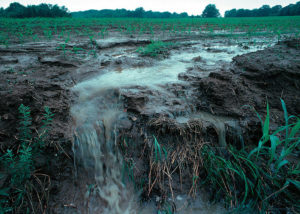By Matt Doll, Minnesota Environmental Partnership
In last week’s post, (MDA seeking Minnesotans’ feedback on nitrogen rule) we explained the Minnesota Department of Agriculture’s process for developing its Groundwater Protection Rule, which aims to protect Minnesotans’ drinking water from nitrate contamination. MEP Executive Director Steve Morse testified on the need for these protections at a public comment hearing in St. Cloud July 25th, and we’ve encouraged Minnesotans to submit their own written comments on the rule.
In response to this rule, and advocacy by MEP and its member organizations, Minnesotans have asked: “Why is nitrate a concern – is this really a threat to human health in Minnesota?” That’s an important question, and while research into the full health impacts of nitrate in drinking water is ongoing, the answer is certainly, “yes.” Nitrate poses significant health dangers to both infants and adults. The rising nitrate levels in drinking water across the state necessitate stronger protection and prevention efforts.
The threat to infants
When a person drinks water containing nitrate, their cells convert much of that nitrate into nitrite. Nitrite creates a protein called methemoglobin, which harms the blood’s ability to carry oxygen.
A high enough level of methemoglobin causes the methemoglobinemia disorder, commonly known in infants as “blue baby syndrome.” This disorder causes respiratory and heart problems and is potentially fatal. While Minnesota has seen few reported cases of methemoglobinemia since the late 1940s, it is largely because public health officials have been working to prevent people from drinking water with elevated nitrate levels. But beyond Blue Baby Syndrome, a 2016 report by the Iowa Environmental Council found that increased nitrate consumption is associated with other birth defects in the development of nerves, brain and skeletal structure.
The only way to prevent these risks is for pregnant women and infants to avoid drinking water contaminated with nitrate. And with Minnesota communities and households that rely on groundwater finding increasing nitrate levels in their water supplies, the risk of new cases grows greater.
The risk to adults
The Iowa Environmental Council’s report also compiled research that shows that nitrates pose risks to anyone consuming contaminated water. Bladder cancer accounts for 1 in 20 new cancer cases in the United States, and studies in multiple countries have shown that increased consumption of nitrate-contaminated water is associated with increased risk of this disease. And this increase in bladder cancer occurred even at nitrate levels of 5 milligrams per liter of water, which is only half of the current drinking water standard. Likewise, studies in the United States in 2010 have shown an increased risk of thyroid cancer among adults.
Action to protect Minnesotans is needed
The data shows that the buildup of nitrate in Minnesotans’ drinking water is primarily due to runoff from nitrogen fertilizer leeching into groundwater. The MDA’s proposed rule sets up a framework to reduce nitrogen infiltration in some of Minnesota’s most vulnerable water resources. It still leaves many areas – and most private well-owners – unprotected, but it takes an important step toward securing drinking water for Minnesotans. It’s important that we make it clear that our state needs to provide relief for residents facing the high costs to their finances and their health, of nitrate pollution. If you wish share your thoughts on tackling this problem with the MDA, we encourage you to submit your comments online until the comment period ends on August 15.
Further reading: Nitrate and Methemoglobinemia, Minnesota Department of Health, April 2018
